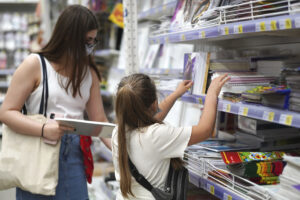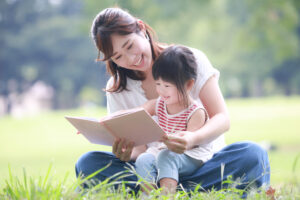
Car Seat Types
Learn about the four types of car seats, while keeping in mind the following tips:
- As children grow, how they sit in your car will change. Make sure you use a car seat that fits your child’s current size and age.
- Not all car seats fit in all vehicles. Make sure the car seat is the right fit for your vehicle. Test the car seat you plan to buy to make sure it fits well with your vehicle.
- Buy a car seat that can be installed and used correctly every time.
- More information here on ExperiencedMommy.com
Rear-Facing Car Seat
The best seat for your young child to use. It has a harness and, in a crash, cradles and moves with your child to reduce the stress to the child’s fragile neck and spinal cord.
Types
- Infant Car Seat (Rear-Facing only): Designed for newborns and small babies, the infant-only car seat is a small, portable seat that can only be used rear-facing. Babies usually outgrow their infant car seats by eight or nine months. When that happens, we recommend that parents purchase a convertible or all-in-one car seat and use it rear-facing.
- Convertible Seat: As a child grows, this seat can change from a rear-facing seat to a forward-facing seat with a harness and tether. Because it can be used with children of various sizes, it allows for children to stay in the rear-facing position longer.
- All-in-One Seat: This seat can change from a rear-facing seat to a forward-facing seat (with a harness and tether) and to a booster seat as a child grows. Because it can be used with children of various sizes, it allows for children to stay in the rear-facing position longer.
Forward-Facing Car Seat
Has a harness and tether that limits your child’s forward movement during a crash.
Types
- Convertible Seat: As a child grows, this seat can change from a rear-facing seat to a forward-facing seat with a harness and tether.
- Combination Seat: As a child grows, this seat transitions from a forward-facing seat with a harness and tether into a booster.
- All-in-One Seat: This seat can change from a rear-facing seat to a forward-facing seat (with a harness and tether) and to a booster seat as a child grows.
Booster Seat
Positions the seat belt so that it fits properly over the stronger parts of your child’s body.
Types
- Booster Seat with High Back: This type of booster seat is designed to boost the child’s height so the seat belt fits properly. It also provides neck and head support and is ideal for vehicles that don’t have head rests or high seat backs.
- Backless Booster Seat: A backless booster seat is designed to boost the child’s height so the seat belt fits properly. It does not provide head and neck support. It is ideal for vehicles that have head rests.
- Combination Seat: As a child grows, this seat transitions from a forward-facing seat with a harness into a booster.
- All-in-One Seat: This seat can change from a rear-facing seat to a forward-facing seat (with a harness and tether) and to a booster seat as a child grows.
Seat Belt
Should lie across the upper thighs and be snug across the shoulder and chest to restrain your child safely in a crash. It should not rest on the stomach area or across the neck or face.




